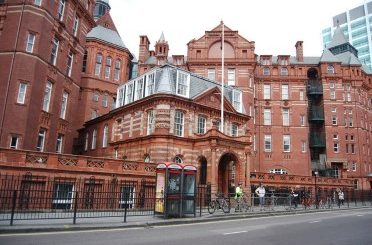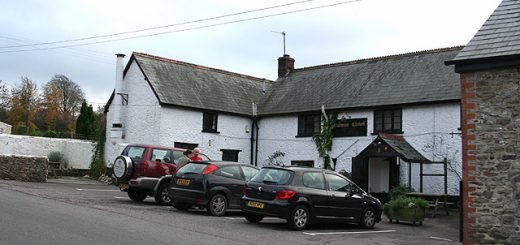Raby Castle
Raby Castle, which currently sits in a 200 acre deerpark, was built in the mid 14th century by John Neville, 3rd Baron Neville de Raby, (Born circa.1337 – Died 17 October 1388) a Knight of the Garter who had served as Admiral of the North and Steward to the Kings Household. On 3 May 1415 John’s granddaughter was born at Raby, Cecily Neville, Duchess of York (Died 31 May 1495) who married Richard of York (Born 21 September 1411 – Died 30 December 1460) (Richard Plantagenet, 3rd Duke of York, 6th Earl of March, 4th Earl of Cambridge, and 7th Earl of Ulster) and gave birth to thirteen children, including King Edward IV (Born 28 April 1442 – Died 9 April 1483) and King Richard III (Born 2 October 1452 – Died 22 August 1485). This probably was not the first connection between Raby and Royalty as it is said that back in the 11th century the estate was owned by the Viking King Canute (Cnut the Great).
![GlenBowman [CC BY 2.0 (https://creativecommons.org/licenses/by/2.0)], via Wikimedia Commons](http://www.mysteriousbritain.co.uk/wp/wp-content/uploads/2018/12/1280px-Raby_Castle_spring-300x200.jpg) The castle stayed in the Neville family until the failed Rising of the North in 1569 when the Catholic Charles Neville, 6th Earl of Westmorland (Born 18 August 1542 – Died 16 November 1601) led a rebellion against Queen Elizabeth I in support of Mary Queen of Scots. Raby castle was seized by the crown and Westmorland fled to the continent. The first of Raby Castle’s three reputed ghosts is Charles Neville, 6th Earl of Westmorland who apparently floats upstairs to the Baron’s Hall or Great Hall. (I am not sure which staircase this refers to but a grand Jacobean-style north stair to the Baron’s Hall was part of renovations carried out in 1864 by Austin and Johnson).
The castle stayed in the Neville family until the failed Rising of the North in 1569 when the Catholic Charles Neville, 6th Earl of Westmorland (Born 18 August 1542 – Died 16 November 1601) led a rebellion against Queen Elizabeth I in support of Mary Queen of Scots. Raby castle was seized by the crown and Westmorland fled to the continent. The first of Raby Castle’s three reputed ghosts is Charles Neville, 6th Earl of Westmorland who apparently floats upstairs to the Baron’s Hall or Great Hall. (I am not sure which staircase this refers to but a grand Jacobean-style north stair to the Baron’s Hall was part of renovations carried out in 1864 by Austin and Johnson).
In 1626 Raby Castle, Barnard Castle and Long Newton were purchased by the Treasurer to King Charles I, Sir Henry Vane, the Elder (Born 18 February 1589 – Died 1655) for £18,000. He used stone from Barnard Castle to rebuild Raby. Sir Henry became a supporter of Parliament during the English Civil War after he fell out of favour with the King. Raby Castle was attacked five times during the war. Henry’s son, Sir Henry Vane the Younger (Baptised 26 March 1613 – Died 14 June 1662) was a leading Parliamentarian but took no part in the execution of King Charles I. Even so, when King Charles II took the throne with the restoration of the monarchy, Henry was arrested and subsequently beheaded on Tower Hill after a questionable trial.
Samuel Pepys recorded the execution which demonstrates the attempts made to prevent him speaking to the gathered crowd. “He made a long speech, many times interrupted by the Sheriff and others there; and they would have taken his paper out of his hand, but he would not let it go. But they caused all the books of those that writ after him to be given the Sheriff; and the trumpets were brought under the scaffold that he might not be heard. Then he prayed, and so fitted himself, and received the blow; but the scaffold was so crowded that we could not see it done….He had a blister, or issue, upon his neck, which he desired them not hurt: he changed not his colour or speech to the last, but died justifying himself and the cause he had stood for; and spoke very confidently of his being presently at the right hand of Christ; and in all things appeared the most resolved man that ever died in that manner, and showed more of heat than cowardize, but yet with all humility and gravity. One asked him why he did not pray for the King. He answered, “Nay,” says he, “you shall see I can pray for the King: I pray God bless him!”
Raby Castle’s second ghost is thought to be Sir Henry Vane the Younger, who’s headless body has been said to sit at a writing desk in the library and as if he is trying to ensure his last words are heard, his severed head sitting beside a piece of paper dictates a letter his body is writing.
King William III created Christopher Vane (Born 1653 – Died 1723), the son of Henry Vane the Younger, Baron Barnard. He married Elizabeth Holles on 9 May 1676 and had three sons. The oldest, Henry died as an infant, but the other two, Gilbert Vane, 2nd Baron Barnard (Born 1678 – Died 1753) and William Vane, 1st Viscount Vane (Born 1680 – Died 1734) and their relationship with their mother create the foundations for the third ghost of Raby Castle.
Mike Hallowell gave the following description of the ghost of Lady Barnard (Elizabeth Holles), known as the Old Hell Cat, in an article entitled ‘Hauntings at a traitor’s castle’ which appeared in the Shields Gazzette on Wednesday 14 March 2007.
One of the most intriguing parts of the castle is known as Clifford’s Tower.
Here, a terrifying apparition known as Old Hell Cat is said to reside.
One could be forgiven for thinking Old Hell Cat was some sort of demonic entity, but no; Old Hell Cat was actually the nickname of the first Lady Barnard, which tells us something about the way her subjects and servants thought of her – not to mention her own family.
What caused Lady Barnard to be thought of so badly? Well, she and her husband were of the “old school” mentality.
They had two sons who – at least from their perspective – brought them nothing but grief.
Lord Barnard and his wife wanted their sons to marry “nice girls of breeding”, but one of them at least – Gilbert – ended up having a fling with a commoner called Mary Randyll and his mother hit the roof.
There wasn’t a cat in hell’s chance – if you’ll excuse the pun – that the Lord and Lady would allow their sons to bring lowly commoners into the castle as their wives.
Hence, in a fit of absolute madness, they emptied the castle of every stick of furniture and burnt all the records.
If Gilbert or Christopher were to inherit the castle, then that would be all they’d inherit. They’d get the building, but there would be absolutely nothing in it.
The lads were miffed of course, and managed to get a court order forcing their parents to restore the castle exactly as it had been before all the trouble had started.
Their efforts weren’t perfect, but they grudgingly did their best.
Lady Barnard may have followed the court order, but she didn’t mellow in her feelings. She still despised commoners, and brooded over the matter for the rest of her days.
She took to knitting in Clifford’s Tower, aggressively clacking away at two plain and one pearl, no doubt muttering under her breath about kids these days.
According to legend, her knitting needles get red hot, and the unwary visitor can, after dark, see them bobbing around like fireflies.
William Vane, 1st Viscount Vane married Lucy Jolliffe, who feuded with her mother in law from 1703. William raised a lawsuit with the House of Lords as his father, Christopher Vane, refused to give him the inheritance annuity he was due. He was to be given the Fairlawn estate. Christopher Vane gave the Fairlawn (Fairlawne) estate and Raby Castle to John Bazire and Peter Smart “for the use of the said Lord Barnard and his heirs forever.” Christopher and Elizabeth were at this point living at Raby Castle. They moved back to Fairlawn by 1712 when, following a feud with Gilbert’s wife, Mary Randyll, Christopher Vane arranged to have Raby Castle, Gilbert’s inheritance, stripped “of its lead, glass, doors, and furniture, even pulling up the floors, cutting down the timber, and destroying the deer, and ‘of a sudden in three days’ did damage to the tune of £3000, holding a sale at which the household goods, lead, etc., were sold for what they would fetch” [Owen Scott Stanley]. Gilbert in turn successfully sued his father and eventually inherited Raby Castle in 1723.
John Vane, 11th Baron Barnard is the current lord of Raby Castle, which is open to the public.




Recent Comments